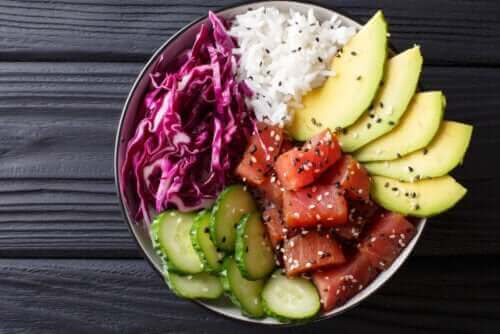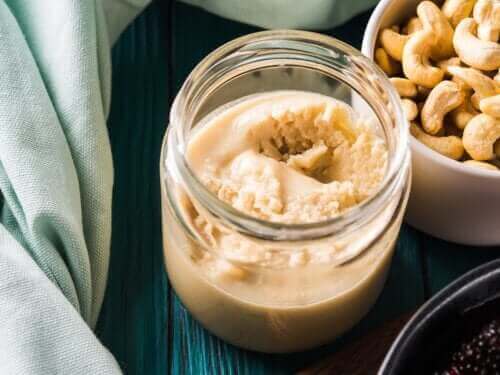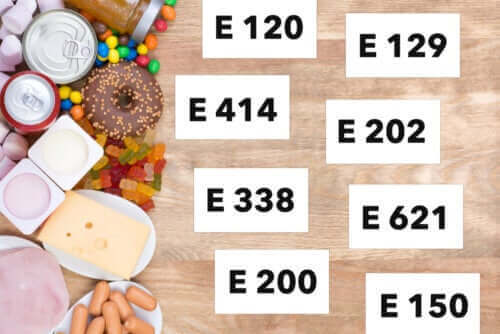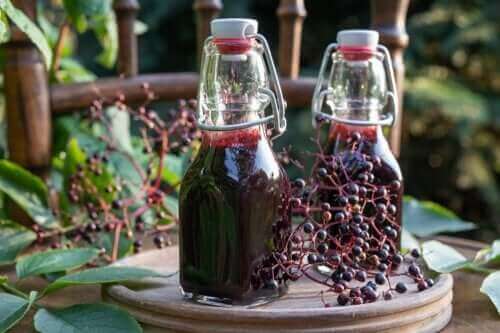七種高鋅食物及其好處
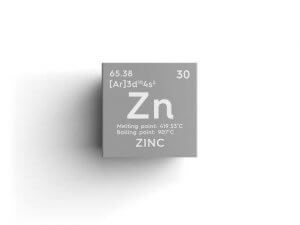
在這篇文章中,我們將解釋什麼是鋅、它的好處是什麼、鋅的每日建議攝取量、七種富含鋅的食物,以及鋅缺乏可能導致的後果。
閱讀本文以獲得更多資訊。
鋅是什麼?
鋅是人體需要的微量元素。
鋅是細胞正常運作的必需礦物質。它在組織的形成、賀爾蒙的產生、蛋白質中扮演重要角色,並參與了與酶相關的多數化學反應。
鋅通常存在於肌肉、骨骼、大腦、腎臟和肝臟中。此外,這種礦物質在精液、眼睛和攝護腺中有較高的含量。
鋅的建議飲食量
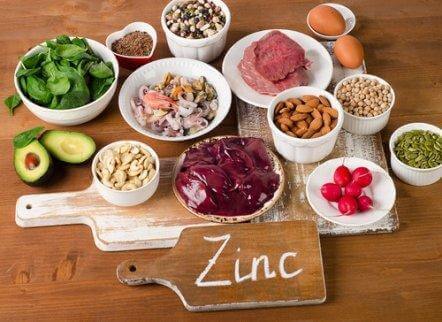
儘管鋅的需求因年齡和性別而異,但鋅的每日建議攝取量介於10至13毫克。
以下是按年齡層列出的建議攝取量:
- 0-6個月嬰兒:2毫克
- 7-12個月嬰兒:3毫克
- 1-3歲嬰兒:3毫克
- 4-8歲兒童:5毫克
- 9-13歲兒童:8毫克
- 14-18歲男孩:11毫克
- 成年男性:11毫克
- 14-18歲少女:9毫克
- 成年女性:9毫克
- 孕婦:11-12毫克
- 哺乳期女性:12-13毫克
七種高鋅食物
1. 肉類

肉類含有豐富的鋅,尤其是肝臟。如果是牛肉,肝臟每100克含有7.3毫克的鋅。
其他富含鋅的食物包括肉類,特別是牛肉,因為每100克的肉類含有6.2毫克的鋅。
猪肉和猪肝的含量次高。
家禽肉是鋅含量第三豐富的肉類。除了健康和容易取得之外,雞肉或火雞肉每100克含鋅量達到5毫克。
2. 海鮮
一般來說,你應該吃貝類和甲殼類,這些海鮮含有豐富的鋅。
蛤蜊是含鋅量最高的海鮮,每100克含鋅量達7毫克。
另一個很好的選擇是螃蟹,每100克提供4.7毫克的鋅。
3. 堅果
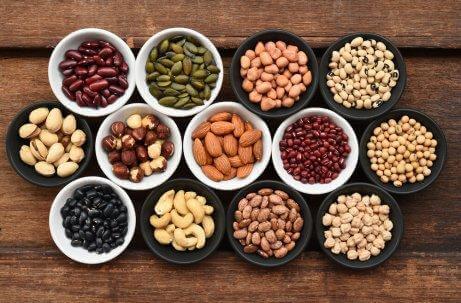
榛果和杏仁等堅果也是富含鋅的食物,這些食物每100克中含有4毫克的鋅。
4. 乳製品
優格、牛奶和起司是富含鋅的乳製品。
起司含有大量的鋅,特別是巧達起司。不過這些食物高熱量和多鹽,應該適量食用。
5. 穀物和種籽
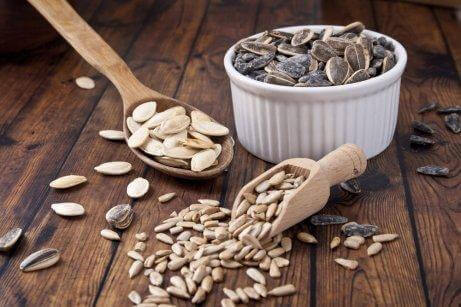
全穀類食物是一種在飲食中獲取鋅的方法,不過這種食物含有植酸,讓身體不會吸收太多的鋅。全穀類中的植酸會阻礙某些礦質微營養物質的吸收。
不過,酵母可以降低植酸濃度,從而有利於鋅的吸收。
為了幫助鋅的吸收,你應該食用全麥麵包和酵母、燕麥片、南瓜籽,尤其是啤酒酵母,因為它含有高濃度的鋅。
6. 可可豆
黑巧克力在很多方面都有好處,包括可以幫助保護免疫系統。一塊100克未加糖的黑巧克力含有10毫克的鋅,相當於每日建議攝取量的100%。
此外,100克未加糖的可可粉中含有40%的鋅每日建議攝取量。
7. 補充品
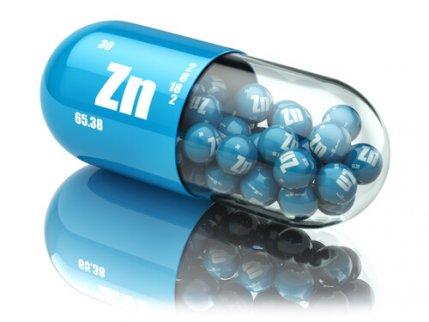
與其他礦物質一樣,缺乏鋅的人可以服用鋅的補充品。
但請注意,鋅過量也會導致健康問題,因此建議在醫師的指導下服用此類補充品。
鋅對健康的好處
如上所述,鋅在各種代謝過程中扮演重要角色,强化多種酶類、增强免疫系統和神經功能。
鋅在細胞膜發育和基因表現中也有扮演重要角色。
一些研究已經證實鋅具有治療常見感冒症狀、老年性黃斑部病變、糖尿病,甚至愛滋病的可能性。
缺乏鋅會導致兒童的身體發育問題、妊娠併發症、弱化免疫系統、增加感染的風險。因此,在飲食中加入富含鋅的食物非常重要。
禁忌症
每天攝取超過300毫克的鋅是有毒的。可能會出現胃病、尿血或嗜睡。過量的鋅也會影響銅的吸收。可能導致銅缺乏,而導致貧血、心律不整或疲勞。
因此,均衡多樣的飲食是獲得身體正常運轉所需營養的健康方法。
在這篇文章中,我們將解釋什麼是鋅、它的好處是什麼、鋅的每日建議攝取量、七種富含鋅的食物,以及鋅缺乏可能導致的後果。
閱讀本文以獲得更多資訊。
鋅是什麼?
鋅是人體需要的微量元素。
鋅是細胞正常運作的必需礦物質。它在組織的形成、賀爾蒙的產生、蛋白質中扮演重要角色,並參與了與酶相關的多數化學反應。
鋅通常存在於肌肉、骨骼、大腦、腎臟和肝臟中。此外,這種礦物質在精液、眼睛和攝護腺中有較高的含量。
鋅的建議飲食量

儘管鋅的需求因年齡和性別而異,但鋅的每日建議攝取量介於10至13毫克。
以下是按年齡層列出的建議攝取量:
- 0-6個月嬰兒:2毫克
- 7-12個月嬰兒:3毫克
- 1-3歲嬰兒:3毫克
- 4-8歲兒童:5毫克
- 9-13歲兒童:8毫克
- 14-18歲男孩:11毫克
- 成年男性:11毫克
- 14-18歲少女:9毫克
- 成年女性:9毫克
- 孕婦:11-12毫克
- 哺乳期女性:12-13毫克
七種高鋅食物
1. 肉類

肉類含有豐富的鋅,尤其是肝臟。如果是牛肉,肝臟每100克含有7.3毫克的鋅。
其他富含鋅的食物包括肉類,特別是牛肉,因為每100克的肉類含有6.2毫克的鋅。
猪肉和猪肝的含量次高。
家禽肉是鋅含量第三豐富的肉類。除了健康和容易取得之外,雞肉或火雞肉每100克含鋅量達到5毫克。
2. 海鮮
一般來說,你應該吃貝類和甲殼類,這些海鮮含有豐富的鋅。
蛤蜊是含鋅量最高的海鮮,每100克含鋅量達7毫克。
另一個很好的選擇是螃蟹,每100克提供4.7毫克的鋅。
3. 堅果

榛果和杏仁等堅果也是富含鋅的食物,這些食物每100克中含有4毫克的鋅。
4. 乳製品
優格、牛奶和起司是富含鋅的乳製品。
起司含有大量的鋅,特別是巧達起司。不過這些食物高熱量和多鹽,應該適量食用。
5. 穀物和種籽

全穀類食物是一種在飲食中獲取鋅的方法,不過這種食物含有植酸,讓身體不會吸收太多的鋅。全穀類中的植酸會阻礙某些礦質微營養物質的吸收。
不過,酵母可以降低植酸濃度,從而有利於鋅的吸收。
為了幫助鋅的吸收,你應該食用全麥麵包和酵母、燕麥片、南瓜籽,尤其是啤酒酵母,因為它含有高濃度的鋅。
6. 可可豆
黑巧克力在很多方面都有好處,包括可以幫助保護免疫系統。一塊100克未加糖的黑巧克力含有10毫克的鋅,相當於每日建議攝取量的100%。
此外,100克未加糖的可可粉中含有40%的鋅每日建議攝取量。
7. 補充品

與其他礦物質一樣,缺乏鋅的人可以服用鋅的補充品。
但請注意,鋅過量也會導致健康問題,因此建議在醫師的指導下服用此類補充品。
鋅對健康的好處
如上所述,鋅在各種代謝過程中扮演重要角色,强化多種酶類、增强免疫系統和神經功能。
鋅在細胞膜發育和基因表現中也有扮演重要角色。
一些研究已經證實鋅具有治療常見感冒症狀、老年性黃斑部病變、糖尿病,甚至愛滋病的可能性。
缺乏鋅會導致兒童的身體發育問題、妊娠併發症、弱化免疫系統、增加感染的風險。因此,在飲食中加入富含鋅的食物非常重要。
禁忌症
每天攝取超過300毫克的鋅是有毒的。可能會出現胃病、尿血或嗜睡。過量的鋅也會影響銅的吸收。可能導致銅缺乏,而導致貧血、心律不整或疲勞。
因此,均衡多樣的飲食是獲得身體正常運轉所需營養的健康方法。
- Cinquanta, L., Di Cesare, C., Manoni, R., Piano, A., Roberti, P., Salvatori, G. (2016). Mineral essential elements for nutrition in different chocolate products. International Journal of Food Science and Nutrition. 67 (7): 773-8. https://pubmed.ncbi.nlm.nih.gov/27346251/
- Comité Científico AESAN. (Grupo de Trabajo). (2022). López, G. E., Bretón, L. I., Díaz, P. A., Moreno-Arribas, V., Portillo, B. M. P., Rivas, V. A. M., Fresán, S. U., Tejedor, R. L., Ortega, P. F. B., Aznar, L. S., Lizalde, G. E., & Carlos, C. M. A. Informe del Comité Científico de la Agencia Española de Seguridad Alimentaria y Nutrición (AESAN) sobre recomendaciones dietéticas sostenibles y recomendaciones de actividad física para la población española. Revista del Comité Científico de la AESAN. 33: 11-70. https://www.aesan.gob.es/AECOSAN/docs/documentos/seguridad_alimentaria/evaluacion_riesgos/informes_comite/INFORME_RECOMENDACIONES_DIETETICAS.pdf
- Diallo, A., Deschasaux, M., Latino-Martel, P., Hercberg, S., Galan, P., Fassier, P., Allès, B., Guéraud, F., Pierre, F. H., & Touvier, M. (2018). Red and processed meat intake and cancer risk: Results from the prospective NutriNet-Santé cohort study. International Journal of Cancer. Journal International Du Cancer, 142(2), 230–237. https://onlinelibrary.wiley.com/doi/10.1002/ijc.31046
- Fundación Española de la Nutrición (FEN). Alimentos y bebidas. Datos sobre composición nutricional. https://www.fen.org.es/vida-saludable/alimentos-bebidas
- Harvard T. H. Chan. (2020). The nutrition source: eggs. Harvard School of Public Health. Consultado el 15 de abril de 2023. https://www.hsph.harvard.edu/nutritionsource/food-features/eggs/
- Harvard T. H. Chan. (2020). The nutrition source: whole grains. Harvard School of Public Health. Consultado el 15 de abril de 2023. Disponible en: https://www.hsph.harvard.edu/nutritionsource/what-should-you-eat/whole-grains/
- Hospital Sant Joan de Déu. (2018). Los oligoelementos son esenciales en la dieta de los pacientes con un ECM. https://metabolicas.sjdhospitalbarcelona.org/noticia/oligoelementos-esenciales-dieta-pacientes-ecm
- Johnson, L. E. (2021). Exceso de cinc. Manual MSD. Consultado el 31 de marzo de 2023. https://www.msdmanuals.com/es-es/hogar/trastornos-nutricionales/minerales/exceso-de-cinc
- Mayo Clinic. (2020). Cinc. Consultado el 15 de abril de 2023. https://www.mayoclinic.org/es-es/drugs-supplements-zinc/art-20366112
- Mayo Clinic. (2022). Meatless meals: the benefits of eating less meat. Consultado el 15 de abril de 2023. https://www.mayoclinic.org/healthy-lifestyle/nutrition-and-healthy-eating/in-depth/meatless-meals/art-20048193
- Mayo-Wilson, E., Junior, J. A., Imdad, A., Dean, S., Chan, X-H., Chan, E. S., Jaswal, A., Bhutta, Z. A. (2014). Zinc, supplementation for preventing mortality, morbidity, and growth failure in children aged 6 months to 12 years of age. Cochrane Library. https://www.cochranelibrary.com/cdsr/doi/10.1002/14651858.CD009384.pub2/full
- Medline Plus. (2021). El zinc en la dieta. Biblioteca Nacional de Medicina de Estados Unidos. Consultado el 15 de abril de 2023. https://medlineplus.gov/spanish/ency/article/002416.htm
- Mount Sinai. Zinc information. https://www.mountsinai.org/health-library/supplement/zinc
- National Institutes of Health. (2022). Zinc. U. S. Department of Health and Human Services. Consultado el 15 de abril de 2023. https://ods.od.nih.gov/factsheets/Zinc-DatosEnEspanol/
- Roohani, N., Hurrell, R., Kelishadi, R., Schulin, R. (2013). Zinc and its importance for human health: an integrative review. Journal of Research in Medical Sciences, 18(2), 144-157. https://www.ncbi.nlm.nih.gov/pmc/articles/PMC3724376/
- Samitiya, M., Aluko, R. E., & Dhewa, T. (2020). Plant food anti-nutritional factors and their reduction strategies: an overview. Food Production, Processing and Nutrition. 2 (6). https://fppn.biomedcentral.com/articles/10.1186/s43014-020-0020-5
- Saunders, A. V., Craig, W. J., & Baines, S. K. (2013). Zinc and the vegetarian diets. The Medical Journal of Australia. 199 (4): S17-S21. https://www.mja.com.au/journal/2013/199/4/zinc-and-vegetarian-diets
- U. S. Department of Agriculture. (2019). Nuts, pine nuts, dried. Consultado el 15 de abril de 2023. https://fdc.nal.usda.gov/fdc-app.html#/food-details/170591/nutrients
- U. S. Department of Agriculture. (2019). Oats. Consultado el 15 de abril de 2023. https://fdc.nal.usda.gov/fdc-app.html#/food-details/169705/nutrients
- U. S. Department of Agriculture. (2019). Seeds, pumpkin and squash seed kernels, dried. Consultado el 15 de abril de 2023. https://fdc.nal.usda.gov/fdc-app.html#/food-details/170556/nutrients
- U. S. Department of Agriculture. Food Data Central. Datos sobre la composición de alimentos. https://fdc.nal.usda.gov
此文本僅供資訊目的使用,並不取代與專業人士的諮詢。如有疑問,請諮詢您的專家。
